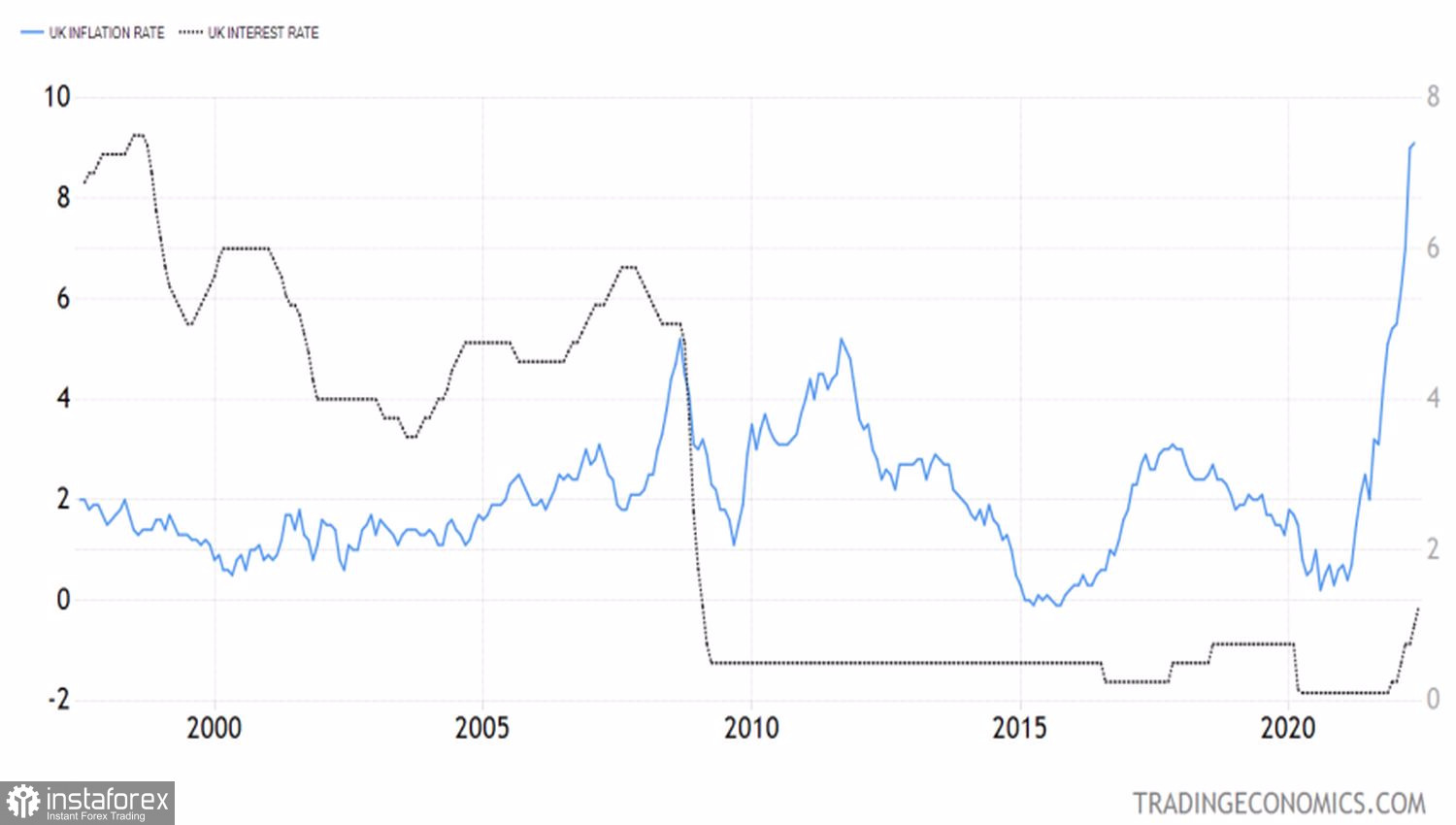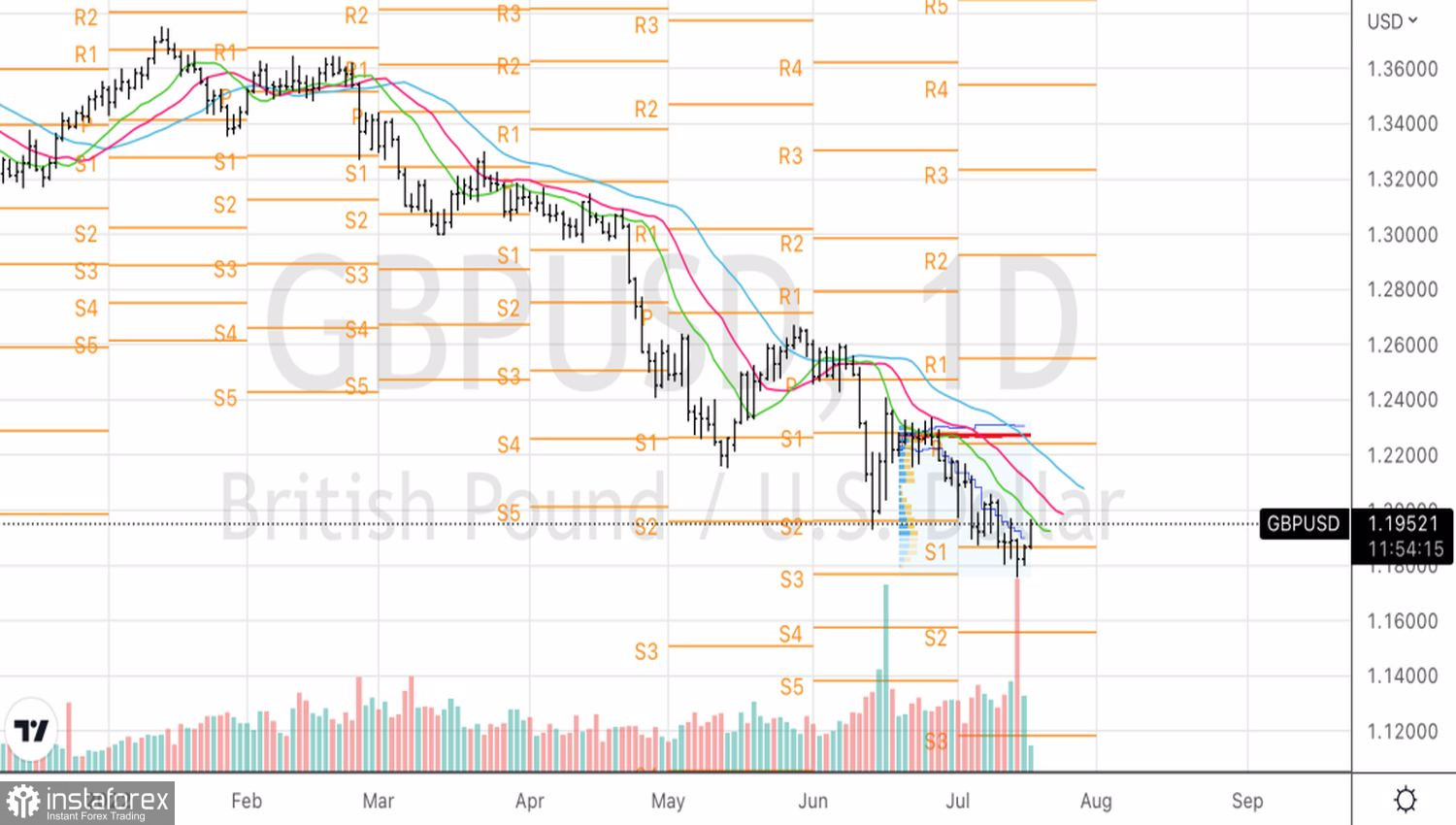Despite the retreat of the US dollar against major world currencies at the end of the week by July 15 and Reuters experts' forecasts of its 8% weakening in 12 months, the dollar does not look like a colossus with feet of clay. The same experts expect it to strengthen over the next three months, and the US economy looks better than, for example, the European one. For the GBPUSD, the situation is aggravated by political uncertainty—there is no clear leader among the candidates for the post of prime minister after Boris Johnson left it.
The next debate, which will eliminate two candidates out of five, and a busy economic calendar, attracts well-deserved attention to the sterling. Releases of data on the labor market, inflation, retail sales, and business activity will show the state of the UK economy and whether it can withstand a 50 bps repo rate increase in August. Markets estimate the probability of such an outcome at 79%, so the Bank of England may have to retreat from its plan for a slow increase in borrowing costs, which it adhered to at five previous meetings.
In this regard, the key event of the week of July 22 is the statistics on consumer prices. According to Bloomberg experts, they will accelerate from 9.1% to 9.3%. At the same time, core inflation, unlike the US, does not yet think of slowing down. This forces BoE to act decisively, especially since four out of five candidates for the leadership of the Conservative Party propose tax cuts, which will support economic growth, but at the same time further disperse the CPI.
Dynamics of British inflation and Bank of England rates

Traders working with the GBPUSD should keep in mind such events as the political crisis in Italy and the complete shutdown of Russian gas transit to Europe, which will increase the risks of a recession not only in the eurozone but throughout the world, and will contribute to an increase in demand for safe-haven assets, primarily on the US dollar. Even though, according to the Bank of America model, the dollar is significantly overvalued, and history shows that it usually strengthened in the lead-up to the Fed's monetary restriction cycle and then began to weaken during the increase in the federal funds rate, this time it is different. The determination of the Fed and the unprecedented interest in safe-haven assets have made the dollar king in Forex.

The GBPUSD pullback may be due to a decrease in the probability of a Fed rate hike at the July meeting by 100 bps from almost 90% to 30%, the growth of American stock indices, and hopes for aggressive actions by the Bank of England. All these factors are temporary. Structural changes are taking place in the British economy against the background of the energy crisis, which cannot but affect the sterling.
Technically, there is a steady downward trend on the GBPUSD daily chart. Rebound from resistances at 1.197, 1.201 and 1.208 should be used to form short positions.





















